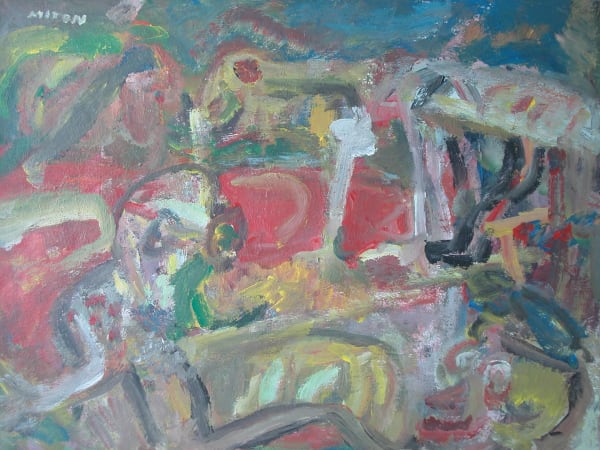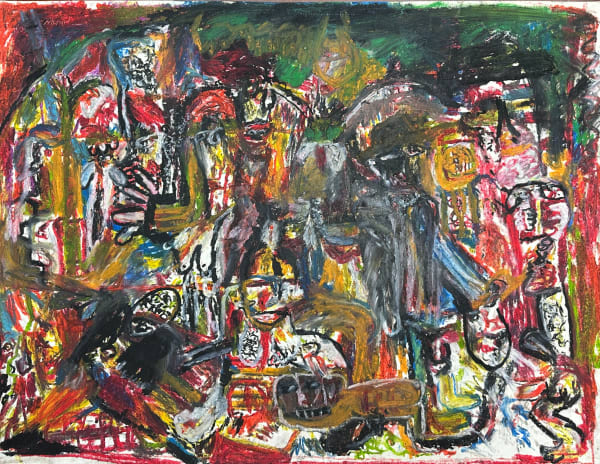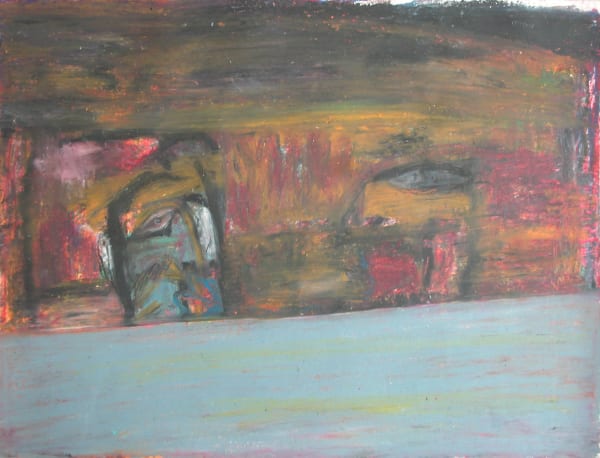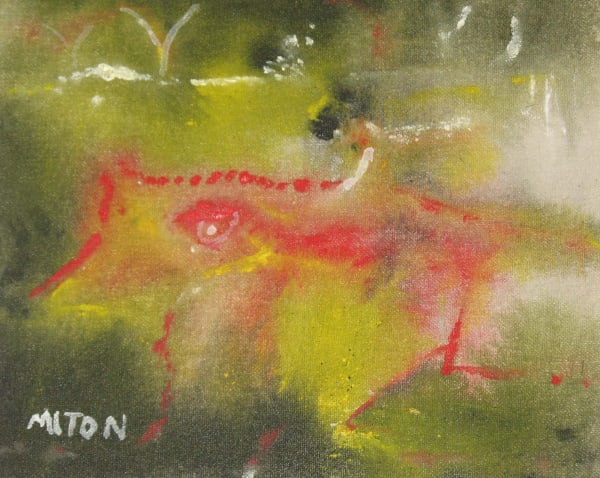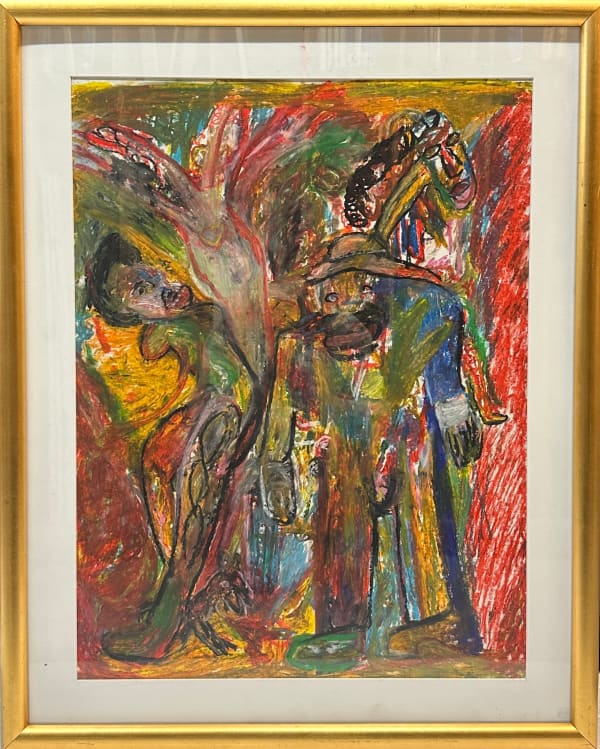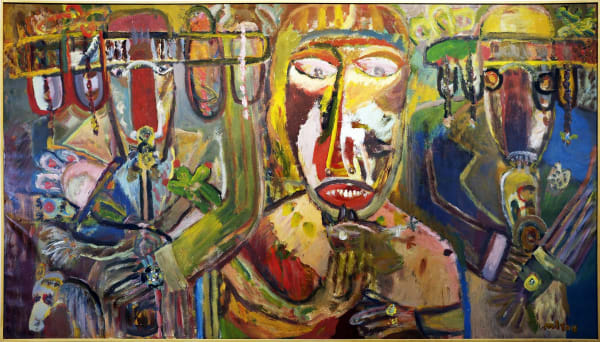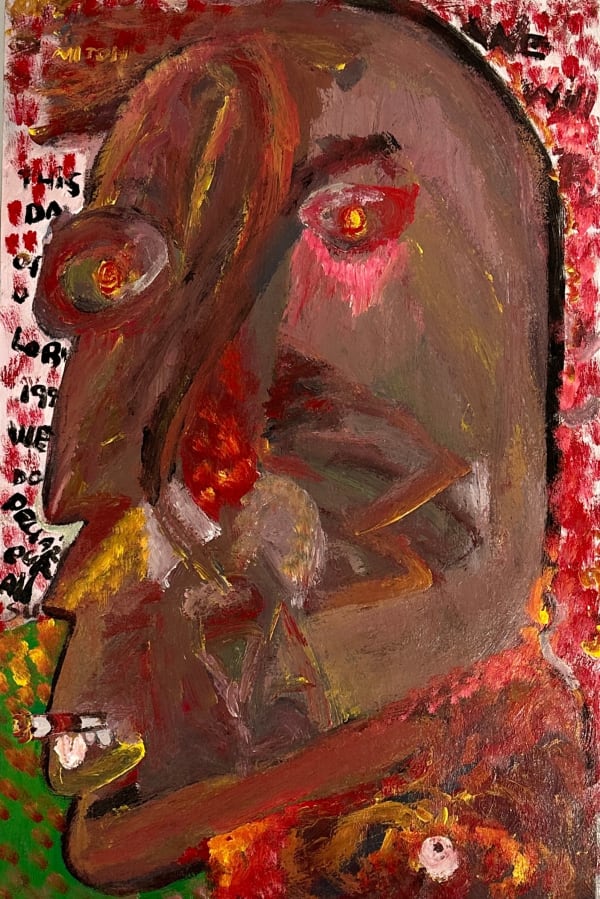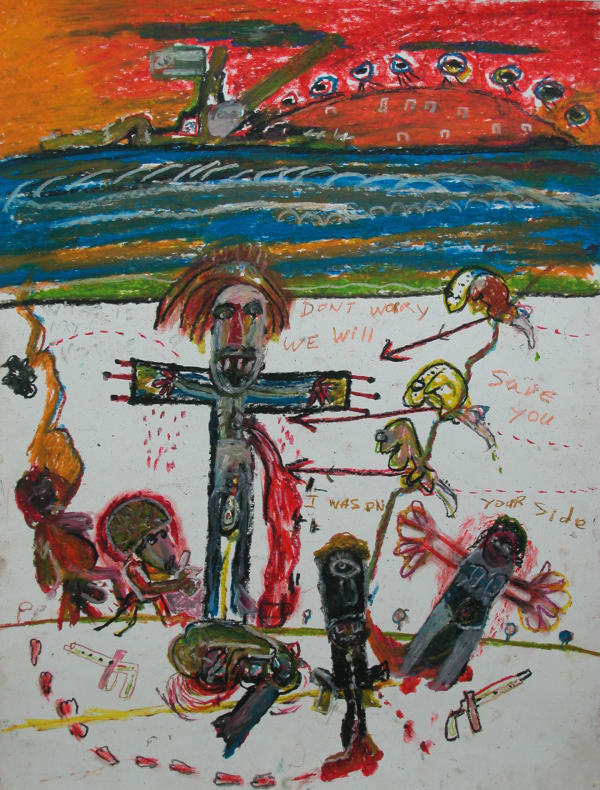Milton George was a self-taught Jamaican artist who started exhibiting in the Seventies, mostly in his country. However, it was during the Eighties that he received recognition and his work became prominent in Jamaica.
Milton George was a self-taught Jamaican artist who started exhibiting in the Seventies, mostly in his country. However, it was during the Eighties that he received recognition and his work became prominent in Jamaica. This was a politically turbulent decade in his country, and George recorded many events in his pieces, sometimes in a prophetic way, such as the decline of the then Primer Minister Michael Manley, in his metaphoric scene of a rider falling out of a horse painted in 1979. A year later Manley lost the elections. Although his work is not political in a strict sense, throughout his life, he continued using symbols such as the Jamaican flag in a social context and referred to socio-political events.
-

-
 Milton GeorgeThe Raising of Lazarus, N.D.Acrylic on Paper37 x 24 3/4 in
Milton GeorgeThe Raising of Lazarus, N.D.Acrylic on Paper37 x 24 3/4 in
94 x 62.9 cmView more details -

-

-

-

-

-
 Milton GeorgeLandscape with Rider, Ca.1995Oil pastel on paper25 x 19 inSold
Milton GeorgeLandscape with Rider, Ca.1995Oil pastel on paper25 x 19 inSold
63.5 x 48.26 cmView more details -
 Milton GeorgeWe Used to Be, Ca.1995Pastel on paper25 x 19 in$ 2,000.00
Milton GeorgeWe Used to Be, Ca.1995Pastel on paper25 x 19 in$ 2,000.00
63.5 x 48.26 cmView more details -
 Milton George"Love Lorn" "We Love", Ca. 1995Oil pastel on paper25 x 19 in
Milton George"Love Lorn" "We Love", Ca. 1995Oil pastel on paper25 x 19 in
63.5 x 48.26 cmView more details -
 Milton GeorgeRed Background with Green, 1993Acrylic on Canvas66 x 65 inSold
Milton GeorgeRed Background with Green, 1993Acrylic on Canvas66 x 65 inSold
167.64 x 165.1 cmView more details -

-

-

-

-

-

Milton George was a self-taught Jamaican artist who started exhibiting in the Seventies, mostly in his country. However, it was during the Eighties that he received recognition and his work became prominent in Jamaica. This was a politically turbulent decade in his country, and George recorded many events in his pieces, sometimes in a prophetic way, such as the decline of the then Primer Minister Michael Manley, in his metaphoric scene of a rider falling out of a horse painted in 1979. A year later Manley lost the elections. Although his work is not political in a strict sense, throughout his life, he continued using symbols such as the Jamaican flag in a social context and referred to socio-political events.
He was essentially a commentator of life in his country, and the narrative behind his pieces is connected to daily life situations, which included political affairs that affected the country. He portrayed the common scenes of the Jamaican streets, the vendors, women in their regular activities, animals, and even the darker side of society such as prostitutes and the intense nocturnal life of the city. He was interested in capturing the tension in human relationships, ranging from couples to street bargaining.
He was often inspired by passages in his own life, portraying himself in his compositions, especially as to his relationship with women. His paintings are visceral, technically in the way, he applied the paint to the surface, and thematically because of the way he approached his subjects.




